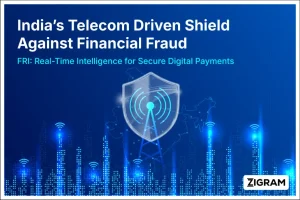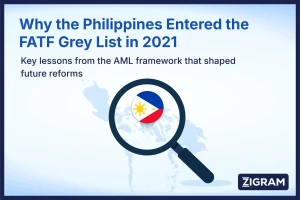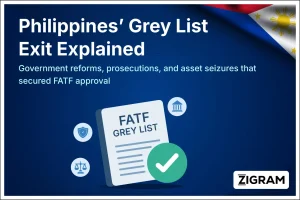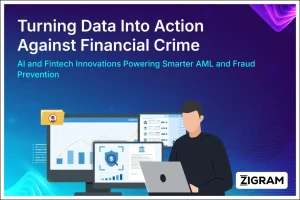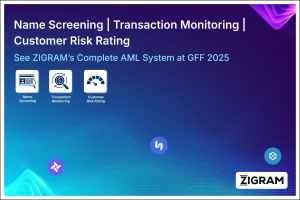Table of Contents
The GENIUS Act, enacted in July 2025, introduces the first comprehensive federal framework for dollar‑pegged stablecoins in the United States. It fundamentally treats stablecoin issuers as financial institutions under the Bank Secrecy Act (BSA), triggering full AML and sanctions compliance requirements. This change aligns crypto stablecoins with traditional banks and broker‑dealers and ensures close alignment with U.S. anti-financial crime law.
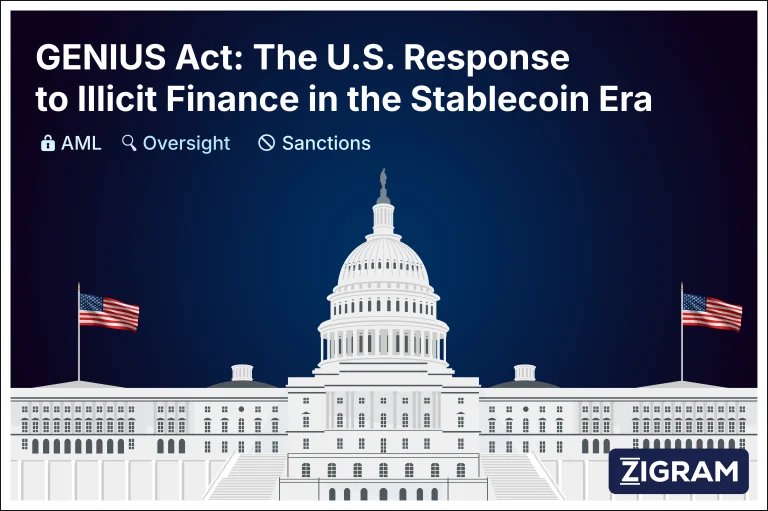
Under the statute, all permitted payment stablecoin issuers (PPSIs)—whether federally chartered or state-regulated—must implement robust AML programs. These include:
- Customer Identification Programs (CIP),
- Risk‑based due diligence and enhanced due diligence (EDD),
- Ongoing transaction monitoring and Suspicious Activity Report (SAR) capability,
- Comprehensive record‑keeping and sanctions screening.
Critically, the Act introduces new technical and institutional enforcement tools: issuers must have the capability to freeze, seize, burn, or block transfers of stablecoins upon receipt of a “lawful order” from a federal agency or court. This infrastructure embeds enforcement capability directly into stablecoin systems.
Finally, executive officers must provide annual certifications that AML and sanctions compliance programs are in place—false or misleading certifications can lead to criminal liability and revocation of issuer status.
Together, these measures mark a paradigm shift: stablecoins are no longer lightly regulated tokens, but regulated financial infrastructure subject to AML rigor comparable to banks.
If you want a concise article regarding this you can also read:
GENIUS Act Of 2025: Regulatory Framework For Payment Stablecoin
Core AML Provisions in Detail
Designation as Financial Institutions (Bank Secrecy Act)
By designating stablecoin issuers as financial institutions under the Bank Secrecy Act, the Act imposes:
- Know‑Your‑Customer (KYC)/Customer Identification Program
- Risk-based Customer Due Diligence (CDD), including enhanced due diligence for high-risk clients
- Transaction monitoring and SAR filing
- Sanctions screening, including OFAC compliance
This effectively closes a longstanding AML loophole: many crypto issuers had functioned outside of formal oversight.
Annual Certification Requirement
Issuers must submit a certification within 180 days of approval, and annually thereafter, confirming that they have implemented AML and sanctions compliance programs designed to prevent use of stablecoins in illicit finance. If an issuer fails to certify, regulators may revoke their authorization. Misleading certification may invoke criminal penalties.
Technical Enforcement Tools
- Issuers must build systems allowing freezing, seizure, burning, or blocking transfers in response to a “lawful order”—court- or agency-issued order, including sanctions enforcement.
- Treasury is empowered to designate foreign issuers as non-compliant if they fail to comply with AML lawful orders; U.S. trading platforms must then ban secondary trading of those tokens.
Tailored AML Risk‑based Controls & Innovation
- Issuers must contextualize AML controls by risk factors—geography, counterparty exposure, transaction size, asset type, etc.
- Treasury must study novel tools (AI, blockchain forensics, analytics), with FinCEN to issue guidance within three years detailing standards for monitoring, detection, and reporting.
Foreign & State‑level Enforcement
- Foreign issuers wanting to offer stablecoins in the U.S. must satisfy U.S. AML standards, register with regulators, hold U.S.-custodied reserves, comply with lawful orders—and will be subject to sanctions designations and potential secondary market bans upon non-compliance.
- State‑regulated issuers under $10 billion can operate under state regimes—but only if those frameworks are deemed “substantially similar” to federal standards; Treasury annually certifies this equivalence. This ensures consistent AML coverage even outside federal oversight.
Implementation Timeline and Regulatory Bodies
Regulatory Timeline
- Agencies (Treasury, FinCEN, OCC, Federal Reserve) are tasked with issuing regulations within 180 days of enactment, which occurred in mid‑July 2025—so rules must be finalized by early 2026.
- Issuers have 180 days after approval to provide initial AML certification and must renew annually.
Oversight & Examination
- Primary federal regulators (e.g., OCC, Fed, FDIC) oversee issuers above the $10 billion threshold. These regulators may inspect for AML compliance as part of periodic examinations, requesting reports on program effectiveness and compliance with BSA/sanctions.
- Violations, including failure to monitor, false certification, or ignoring SAR obligations, can prompt revocation, suspension, cease‑and‑desist orders, or civil fines up to $100K/day—$200K/day for knowing violations.
Regulators may remove individuals from leadership positions if found grossly negligent in compliance.
Role of Treasury & FinCEN
- Treasury provides broad rulemaking authority and oversees guidance development. It may designate foreign issuers non‑compliant and ban their trading in the U.S. market.
- FinCEN must issue specific guidance or rules within three years on tools and techniques for identifying and mitigating illicit activity—effectively modernizing AML tools for crypto flows.
Impact on Issuers, Intermediaries & the AML Ecosystem
Issuers
- Robust compliance infrastructure is now mandatory: KYC systems, ongoing monitoring, AML officers, sanctions screening, certification processes.
- Technical capabilities to enforce lawful orders demand substantial investment in infrastructure—issuers must integrate mechanisms to freeze/suspend tokens across wallets or platforms rapidly.
- Public transparency requirements (monthly reserve disclosures, redemption policies, audit attestation) support auditability of AML program effectiveness.
Intermediaries & VASPs
- Custodians, wallets, exchanges, DeFi front‑ends interacting with stablecoins are likewise expected to align with AML standards—they fall within the scope of compliance pathways under the Act.
- These entities must share transaction logs, support SAR filing, and assist in freezing or blocking transactions as directed.
Private‑Public Collaboration
- The GENIUS Act encourages pre‑emptive cooperation with Treasury before blocking foreign or suspicious transactions—embedding collaboration norms in enforcement.
- Innovations like the T3 Financial Crime Unit—a private initiative involving Tether, TRON, and TRM Labs—are cited as critical pilots in tracing laundering, coordinating asset-freeze actions, and helping authorities seize illicit funds in real-time.
Case Examples & National Security Perspective
Senator Andy Kim (D‑NJ) framed stablecoin AML provisions as vital to national security, highlighting the risks posed by terrorist groups, state-sponsored actors (e.g., North Korea, Iran), and drug cartels exploiting unregulated stablecoins to mask funding channels. He worked to secure provisions requiring issuers to implement sanctions and AML compliance programs and to empower Treasury with rulemaking authority to counter illicit financing network-wide.
Three real-world scenarios illustrate the Act’s relevance:
- A sanctions evasion attempt by a rogue state using stablecoins to move funds cross-border.
- A cyber‑theft racketeering group laundering ransom via stablecoin layering across chains.
- Foreign illicit networks issuing non‑U.S. stablecoins, then targeting U.S. users to bypass domestic AML standards—these are blocked or restricted under the Act.
By embedding freezing capability and cross-border oversight, the Act bridges the oft-lamented gap between traceability and enforcement.
Strengths & Criticisms from an AML Lens
Strengths
- Full BSA coverage aligns stablecoins with banks, eliminating regulatory arbitrage.
- Technical enforcement built-in: freeze, seize, burn powers close the enforcement gap.
- Annual certification & penalties force executive accountability.
- Global reach: foreign issuer restrictions and secondary market bans extend U.S. AML influence.
- Innovation-driven enforcement: mandates for blockchain analytics and AI tools.
Weaknesses & Potential Gaps
- The Act mandates technical capability, but does not require real-time enforcement or interoperability standards—implementation quality may vary.
- Definition of “substantially similar” state frameworks is vague—state regimes might be weaker or inconsistent, creating patchwork compliance risks.
- No requirement to reissue frozen or seized stablecoins to victims—raises questions about restitution in criminal cases.
- Enforcement depends heavily on agency rulemaking—delays or weak guidance could defer effective AML controls. The three‑year window for FinCEN guidance may slow innovation.
Looking Ahead: What Defines Success?
The GENIUS Act is ambitious—but its AML impact hinges on:
- Final rules: Agencies must define CIP, SAR thresholds, sanctions screening protocols, and enforcement procedures within the deadline.
- Technology integration: ML, enriched analytics, and real-time freezing tools must be widely adopted.
- Consistent supervision: Federal examiners must rigorously assess compliance and penalize violations.
- International coordination: Treasury comparisons of foreign AML regimes and reciprocal enforcement are critical to thwart cross-border abuse.
- Public-private models like T3 Labs should be encouraged and institutionalized.
Conclusion
The GENIUS Act marks a watershed moment in U.S. AML policy. By designating stablecoin issuers as BSA-covered financial institutions, requiring comprehensive compliance frameworks, embedding technical enforcement tools, and demanding executive certification, the Act positions the U.S. legal regime to better deter illicit finance through digital currency.
However, success depends on vigilant rulemaking, robust agency enforcement, technological deployment, and sustained collaboration across industry and government. If executed effectively, the GENIUS Act could become a global blueprint for modern, AML‑resilient digital finance.
Key AML Highlights Table
Domain | GENIUS Act Provision |
AML Designation | Treats issuers as financial institutions under BSA |
KYC/CDD | Mandatory customer identification, enhanced due diligence |
Monitoring & SAR | Continuous transaction monitoring; report suspicious activity |
Sanctions | Full OFAC compliance; screening of users and counterparties |
Enforcement Tools | Freeze, seize, burn, block token capabilities built in |
Certification | Annual AML compliance attestation by senior officers |
Foreign Issuers | Restricted unless compliant; may be banned from U.S. secondary markets |
State Issuers | Allowed under state AML frameworks if “substantially similar” |
Innovation | Treasury & FinCEN must study and issue guidance on advanced detection tools |
Sources
News & Analysis
Reuters – “Keeping crypto clean: risk-based controls for stablecoins,” detailing AML integration into the GENIUS Act framework (Reuters)
Reuters – “Stablecoins set up another Trump‑Fed showdown,” on freeze/block capabilities and regulatory landscape (Reuters)
Reuters – “US House sends ‘Genius Act’ stablecoin bill to Trump to sign,” on House passage (Reuters)
Legal & Industry Briefs
Gibson Dunn – “The GENIUS Act: A New Era of Stablecoin Regulation,” covering enforcement tools, BSA/sanctions, certifications (Gibson Dunn)
Pillsbury – “The GENIUS Act: A New Federal Framework for Stablecoin Issuers,” covering BSA compliance requirements and certifications (Pillsbury Law)
Arnold Porter – “What You Need to Know About the New Stablecoin Legislation,” detailing issuer categories, reserve standards, and reserve disclosure (Arnold & Porter)
WilmerHale – “What the GENIUS Act Means for Payment Stablecoin Issuers,” outlining reserve backing and consumer protection goals (WilmerHale)
Skadden – “US Establishes First Federal Regulatory Framework for Stablecoins,” on FinCEN guidance timings and insolvency protections (Skadden)
Chainalysis – “What the GENIUS Act & Market Structure Bills Mean for Crypto Compliance,” emphasizing AML innovation & FinCEN obligations (chainalysis.com)
Reuters – coverage of “Circle’s IPO and the new era of stablecoin regulation” (Reuters)
Reference Legislation & Regulatory Background
Wikipedia (GENIUS Act) – baseline information on enactment dates, definitions, and scope (Wikipedia)
Wikipedia (Bank Secrecy Act) – background on BSA and AML framework (Wikipedia)
Wikipedia (FinCEN) – context on the AML authority deploying guidance under the BSA (Pillsbury Law)
- #GENIUSAct
- #Stablecoins
- #AML
- #FinancialCrime
- #Compliance
- #CryptoRegulation
- #FinCEN
- #SanctionsCompliance
- #RegTech
- #AntiMoneyLaundering
- #DigitalAssets
- #FinancialSecurity

